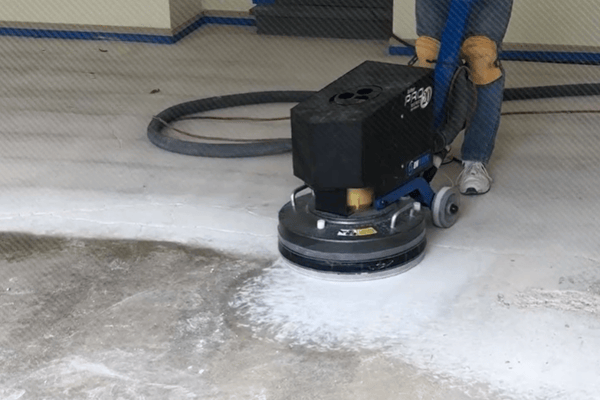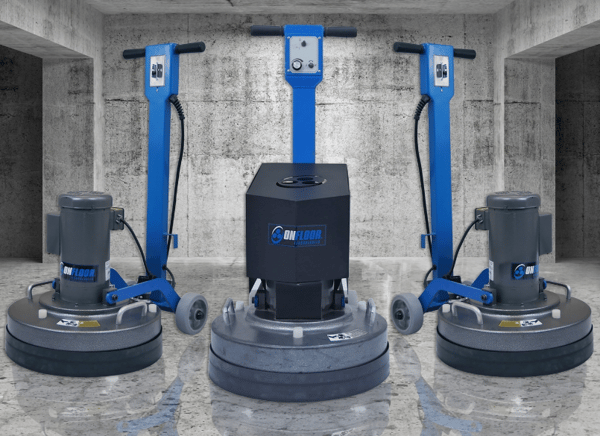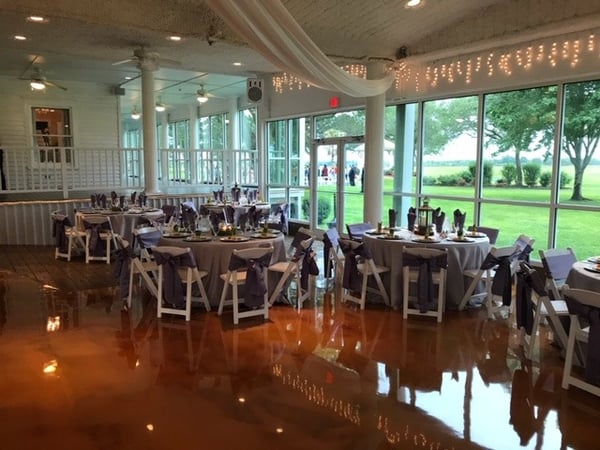In the field of modern residential and commercial design, polished concrete floors have shone through as a durable, low-maintenance, and environmentally friendly option. With an industrial sheen that rivals upscale stone, polished concrete has become a preferred choice for many homeowners and property managers looking to blend aesthetics with functionality.
However, the key to keeping these floors looking like new is understanding the meticulous maintenance that comes with them and the invaluable role industrial floor grinders play in their upkeep.
Maintaining a polished concrete floor is not just about keeping it clean; it's about ensuring that the surface remains smooth, scratch-free, and reflective. This comprehensive guide will take you through the maintenance process, and provide expert insights on leveraging industrial floor grinders.
The Timeless Benefits of Polished Concrete
At the heart of the polished concrete appeal is a trifecta of traits that make it the darling of aficionados and eco-conscious consumers alike.
Durability that Endures
Concrete floors are renowned for their toughness, but polishing adds a layer of resilience that can last a lifetime. With proper care, a polished concrete floor can withstand heavy traffic without losing its luster.
Low Maintenance, High Style
Unlike other floorings that require regular waxing or sealing, polished concrete flooring needs only occasional buffing. This translates to a significant reduction in maintenance time and costs, making it as practical as it is chic.
Eco-Friendly Underfoot
For those looking to lessen their carbon footprint, polished concrete is the obvious choice. It maximizes the use of existing materials (the concrete slab) and reduces the need for chemical cleaners or topical coatings, which can be detrimental to the environment.
Versatility in Design
Polished concrete floors offer endless design possibilities. From creating your own stained concrete floors to applying concrete paste, the opportunities to create decorative concrete floors are endless.
Cost-Effective Option
Compared to other flooring options such as hardwood or tile, polished concrete is more cost-effective. It requires minimal upkeep and has a longer lifespan, making it a wise investment in the long run.
Improved Indoor Air Quality
Unlike carpets that can trap dust, allergens, and other pollutants, polished concrete is a non-porous surface that does not harbor these irritants. This makes it an ideal choice for those with allergies or respiratory issues.

Common Culprits of Concrete Floor Damage
As durable as polished concrete floors may be, they are not invincible. Regular maintenance is essential to prevent and address the following common causes of damage:
- Dirt and debris: Small particles can cause scratches on the surface when walked or dragged across.
- Spills: Liquids can seep into porous concrete if left unattended, causing stains or discoloration.
- Heavy objects: Moving furniture or dropping heavy items can chip or crack the surface.
- Chemicals: Harsh chemicals and acidic substances, such as vinegar or lemon juice, can etch the surface or dull its shine.
- High heels: The sharp points of high heels can leave marks on polished concrete floors.
How to Proactively Prevent These Issues
Preventing damage and maintaining concrete floors is always more cost-effective than having to repair them later. Here are some proactive measures you can take to keep your polished concrete floors in pristine condition:
- Use entryway mats: Place mats at all entrances and encourage people to wipe their feet before entering.
- Clean spills immediately: Have a cleaning kit readily available for any spills that may occur.
- Use furniture pads: Place felt pads under furniture legs to prevent scratches or dents.
- Avoid harsh chemicals: Stick to pH-neutral cleaners specifically designed for polished concrete floors.
- Wear soft-soled shoes: Encourage those entering the space to wear soft-soled shoes, especially high heels with rubber tips or wedge soles.

The Role of Industrial Floor Grinders in Maintenance
While regular cleaning and preventive measures can keep your polished concrete floors looking good, there comes a point when they will need a little extra TLC. This is where industrial floor grinders come into play.
Industrial floor grinders use specialized diamond abrasive tools to grind, polish, and buff concrete surfaces. They are available in different sizes and types, depending on the project's scope and specific needs. For regular maintenance, a smaller grinder is sufficient, but for more extensive renovations or repairs, a larger one may be necessary.
Using industrial floor grinders can help to:
- Remove scratches and imperfections: Grinding down the surface of the concrete can remove minor scratches and imperfections, restoring its smoothness and shine.
- Renew the surface: Over time, polished concrete floors can become dull or lose their reflective properties. Floor grinders can bring back their luster and renew the surface.
- Address stains and discoloration: Grinders can be used to remove stubborn stains or discoloration caused by spills or chemicals.
- Smooth uneven areas: If the concrete floor has any uneven areas or bumps, grinders can even them out for a seamless finish.
The Grind and Beyond
Available in various sizes and strengths, floor grinders use abrasives to grind, sand, polish, or hone concrete surfaces. They can tackle everything from the smallest blemishes to larger imperfections, making them a must-have for concrete floor enthusiasts.

Selecting the Right Tool for the Task
Choosing a floor grinder is not a one-size-fits-all process. It requires an understanding of the floor size and the nature of the corrections needed. From planetary grinders for larger surfaces to handheld versions for smaller touch-ups, the right tool makes all the difference.
Tackling the Common Culprits
Grinders can address a wide range of issues that might plague a polished concrete floor, such as unevenness, superficial cracks, and even joint repairs. They offer a precise and efficient solution to restore uniformity and gloss.
The Importance of Regular Maintenance
While industrial floor grinders play an important role in maintaining polished concrete floors, they shouldn't be solely relied upon. Regular maintenance, including cleaning and preventive measures, is crucial to keeping the floors in excellent condition.
One of the main reasons for this is that polished concrete relies on a topical sealant or hardener to achieve its shine and durability. Over time, this sealant can wear off due to traffic and cleaning, leaving the polished concrete surface vulnerable to damage.
By incorporating regular maintenance into your cleaning routine, you can prolong the lifespan of your polished concrete floors and keep them looking their best for years to come.
Cleaning and Maintenance Tips
Here are some additional tips for cleaning concrete floors and maintaining polished concrete floors:
- Sweep or vacuum regularly: Removing dirt and debris from the surface can prevent scratches and damage.
- Avoid excessive water: While concrete is a durable material, it is still porous and can absorb water over time. Avoid using excessive amounts of water when cleaning.
- Reapply sealant: The topical sealant or hardener used on polished concrete floors will need to be reapplied every few years. Consult with a professional on the best product and application process for your specific floor.
FAQs
Q: Can you walk on polished concrete floors with high heels?
A: Yes, you can walk on polished concrete floors with high heels. However, it is recommended to wear shoes with soft soles to prevent any potential damage.
Q: How often should you reapply sealant on polished concrete floors?
A: It is recommended to reapply sealant every 2-3 years, depending on the level of foot traffic and wear on the floors.
Q: Can you use any type of cleaner on polished concrete floors?
A: No, it is important to use a pH-neutral floor cleaner, specifically designed for polished concrete floors. Harsh chemicals or acidic substances can damage the surface.
Q: How do you remove stains from polished concrete floors?
A: For minor stains, using a pH-neutral cleaner and gentle scrubbing can usually do the trick. For tougher stains, professional cleaning may be necessary.

Q: Is it possible to achieve different finishes with polished concrete floors?
A: Yes, there are various techniques and treatments that can create different finishes, such as matte, glossy, or textured.
Q: Can polished concrete floors be used in outdoor spaces?
A: Yes, polished concrete floors can withstand outdoor conditions and provide a durable and low-maintenance flooring option.
Q: How long does it take for polished concrete floors to fully cure?
A: It typically takes 7-14 days for polished concrete floors to fully cure and reach their maximum strength.
Q: Can polished concrete floors be used in areas with heavy machinery or equipment?
A: Yes, polished concrete can withstand heavy loads and is often used in industrial settings. However, proper installation and maintenance are essential for durability.
Conclusion
Floor grinders are versatile and effective tools for maintaining and cleaning polished concrete floors. By choosing the right tool, incorporating regular maintenance, and following proper cleaning techniques, you can ensure your polished concrete floors remain in top condition for years to come.
Whether used in residential or commercial spaces, polished concrete offers a durable, low-maintenance, and visually appealing flooring option. So whether you're dealing with unevenness, cracks, or general wear and tear on clean, polished concrete floors, a floor grinder can help restore them to their original shine and beauty.
For all your floor grinding needs, check out Onfloors range of industrial floor grinders. With our premium tools and equipment, you can keep your polished concrete floors in top condition!!
24 comments